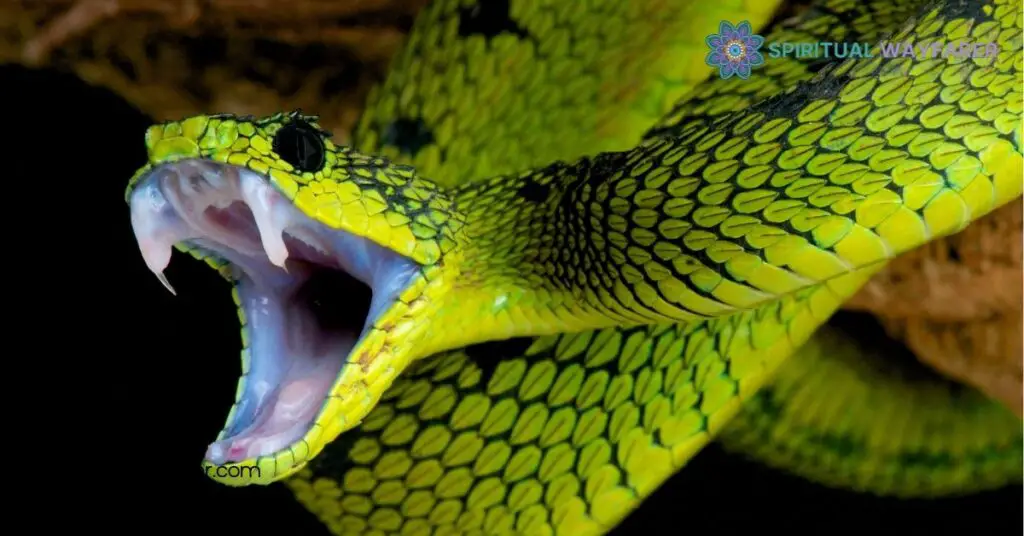Snakes have slithered through human culture for millennia, wrapping themselves around our myths, art, and spirituality. We investigate into the rich tapestry of snake symbolism, uncovering what these enigmatic creatures represent across different societies and eras. From wisdom and transformation to danger and healing, snakes embody a spectrum of meanings that continue to captivate our imagination.
Join us as we explore the multifaceted symbolism of snakes, revealing how they mirror our deepest fears and highest aspirations. Whether you’re intrigued by their role in ancient legends or fascinated by their modern interpretations, our journey into snake symbolism offers insights that resonate with our collective consciousness. Discover the powerful narratives snakes weave and how they inspire us to navigate the complexities of life with grace and resilience.
Historical Significance

Snakes have held important roles across various civilizations, embodying diverse meanings that reflect their complex nature.
Early Representations
In ancient Egypt, snakes symbolized protection and royalty. The uraeus, a rearing cobra, adorned pharaohs’ crowns, representing sovereignty and divine authority. Mesopotamian cultures depicted the god Ningishzida with serpentine features, signifying fertility and the cycle of life. Early Indian texts describe the naga, snake deities associated with water and guardianship. These representations highlight snakes as powerful symbols in early human societies.
Evolution Over Time
Snake symbolism has evolved alongside cultural shifts and societal changes. Greek mythology portrays the serpent Medusa as a symbol of danger and fear after her transformation. In Hinduism, snakes continue to represent renewal and immortality, aligning with the concept of transformation. During the Renaissance, snakes appeared in art and alchemy, embodying both wisdom and the duality of nature. In contemporary contexts, snakes often signify personal transformation and healing, demonstrating their enduring and adaptable symbolism.
Cultural Interpretations

Snakes carry profound symbolism in various cultures worldwide, reflecting a range of meanings from protection to transformation.
Ancient Civilizations
In ancient Egypt, serpents represented protection and royalty. Indian mythologies depict snakes as guardians, acting as mediators between deities and humans. These civilizations honored snakes for their divine authority and protective roles in sacred structures.
Mythology and Legends
Mythological stories often associate snakes with fertility and rebirth. Hinduism links snakes to Kundalini energy, embodying spiritual awakening. Buddhism features Nāga, snake-like beings that protect enlightened figures like Gautama Buddha. These legends emphasize snakes’ roles in spiritual transformation and guardianship.
Symbolism in Religion

Snakes hold important meanings across various religious traditions. We explore how they embody concepts from sin and temptation to healing and salvation.
Christianity
In Christianity, snakes predominantly symbolize sin and temptation. We associate the serpent in the Garden of Eden with Satan, who tempted Eve and Adam, introducing sin into the industry. Also, the “ancient serpent” mentioned in the Book of Revelation denotes evil and depravity. Even though these negative associations, snakes also represent healing. The Book of Numbers describes Moses creating a bronze snake on a pole to heal Israelites bitten by fiery serpents. This act foreshadows Jesus Christ’s salvation, where looking up to the bronze snake symbolizes looking up to Christ for eternal life.
Hinduism
In Hinduism, snake symbolism is multifaceted, encompassing both benevolent and malevolent aspects. We recognize snakes, or Nāgas, as revered deities linked to water and fertility, guardians of treasures, and protectors of sacred spaces. They also symbolize Kundalini energy, representing spiritual awakening and transformation. But, snakes can embody destructive forces, tying them to cycles of creation and destruction within the cosmos.
Psychological Perspectives
Freudian Perspective
In Freudian psychology, we associate the snake with sexual symbolism and the unconscious mind. The snake serves as a phallic symbol, representing the male sexual organ through its shape and movements. Dreams featuring snakes, reptiles, or fish reflect repressed sexual desires or conflicts related to sexuality[^1][^2][^5]. Also, the snake embodies repressed desires, highlighting inner conflicts about experiencing or expressing sexuality. For instance, D.H. Lawrence’s poem “Snake” interprets the snake as a manifestation of the narrator’s sexual desires and unconscious struggles[^2].
Jungian Perspective
From a Jungian standpoint, snakes symbolize transformation and the integration of the unconscious. We view the snake as an archetype of the Self, representing the journey toward personal growth and individuation. The shedding of a snake’s skin illustrates renewal and rebirth, indicating the process of overcoming psychological barriers. Besides, snakes embody the shadow self, urging us to confront and reconcile hidden aspects of our psyche. This perspective emphasizes the snake’s role in facilitating deep psychological insights and fostering emotional resilience.
[^1]: Source 1
[^2]: Source 2
Modern Symbolism

Snakes continue to hold important meaning in today’s society, embodying both healing and transformation. Modern symbolism often highlights their role in medicine and personal growth, reflecting their enduring presence across various fields.
Healing and Medicine
Snakes remain powerful symbols in the medical field. The Staff of Asclepius, featuring a single snake entwined around a rod, serves as a universal emblem of medicine worldwide. This symbol, rooted in ancient Greek mythology, underscores the lasting connection between snakes and healing practices. Currently, snake venom plays a crucial role in developing medications for conditions like high blood pressure and certain cancers. For instance, captopril, an antihypertensive drug, is derived from snake venom, demonstrating the snake’s dual capacity to harm and heal. This ongoing research reinforces the snake’s association with medical advancements and therapeutic answers.
Duality and Transformation
Snakes symbolize duality and transformation in contemporary contexts. They represent the balance between life and death, wisdom and danger, showcasing their complex nature. In personal development, snakes are often seen as agents of change, encouraging individuals to shed old habits and embrace new beginnings. The concept of Kundalini energy in modern spirituality highlights the snake’s role in facilitating spiritual awakening and personal transformation. Also, snakes in popular culture frequently embody both positive and negative traits, reflecting their dualistic symbolism. This balance emphasizes the importance of adaptability and resilience in handling life’s challenges.
Statistical Insights
| Symbolism Aspect | Examples | Modern Applications |
|---|---|---|
| Healing and Medicine | Staff of Asclepius, snake venom | Development of medications, medical symbols |
| Duality and Transformation | Kundalini energy, personal growth | Spiritual practices, self-improvement programs |
By focusing on these key areas, we observe how snake symbolism adapts to contemporary themes, maintaining its relevance and influence in modern society.
Conclusion
Snakes embody a profound duality that resonates across time and cultures. Their symbolism invites us to embrace both our fears and our capacity for transformation. By understanding the multifaceted meanings of snakes, we gain deeper insights into our own journeys of growth and resilience.
As we reflect on their enduring presence in mythology, religion, and modern practices, it’s clear that snakes continue to inspire and challenge us. They remind us of the delicate balance between danger and healing, urging us to navigate life’s complexities with wisdom and grace. Embracing snake symbolism can lead us to a richer, more connected understanding of ourselves and the industry around us.
Frequently Asked Questions
What is the significance of snakes in ancient Egyptian culture?
In ancient Egypt, snakes symbolized protection and royalty. They were often associated with deities like Wadjet, the cobra goddess who guarded the pharaoh, and used as protective amulets. Snakes represented divine authority and were believed to ward off evil, reflecting their revered status in Egyptian society.
How do snakes symbolize transformation in different cultures?
Snakes are widely seen as symbols of transformation due to their ability to shed their skin. This act represents renewal, growth, and the cyclical nature of life. Cultures like Hinduism link snakes to spiritual awakening through Kundalini energy, while Jungian psychology views them as symbols of personal growth and overcoming obstacles.
What role do snakes play in Christian symbolism?
In Christianity, snakes often represent sin and temptation, as seen in the serpent from the Garden of Eden. However, they also symbolize healing and salvation, illustrated by Moses’ bronze snake, which foreshadows Jesus’ sacrifice. This duality highlights snakes’ complex roles in Christian teachings.
How are snakes depicted in Hindu mythology?
Hindu mythology portrays snakes as both benevolent and malevolent. They are revered as deities linked to water and fertility, such as the naga, and symbolize renewal and immortality. At the same time, some snakes represent destructive forces tied to cosmic cycles, reflecting their multifaceted nature.
What is the psychological interpretation of snakes according to Freud and Jung?
Freud saw snakes as phallic symbols representing sexual desires and unconscious conflicts. In contrast, Jung viewed them as symbols of transformation and the integration of the unconscious. Jungian interpretation emphasizes snakes as facilitators of personal growth and emotional resilience, enriching their psychological symbolism.
How are snakes used as symbols in modern medicine?
The Staff of Asclepius, featuring a snake entwined around a rod, is a universal emblem of medicine. Snakes represent healing due to their dual capacity to harm and cure. Snake venom is also vital in developing medications for conditions like high blood pressure and cancer, highlighting their enduring connection to health.
What is the role of snakes in Greek mythology?
In Greek mythology, snakes often symbolize danger and chaos. They appear in various myths, such as the Hydra and Medusa, embodying threats that heroes must overcome. This portrayal reflects the complex nature of snakes as both feared and respected creatures in ancient Greek culture.
How do snakes represent duality in art and alchemy?
During the Renaissance, snakes in art and alchemy symbolized wisdom and the duality of nature. They embodied the balance between life and death, knowledge and mystery. This duality highlights snakes’ role in representing both beneficial and destructive aspects of the natural world.
What is Kundalini energy and its connection to snakes?
Kundalini energy in Hinduism is depicted as a coiled serpent at the base of the spine. It represents spiritual awakening and the potential for enlightenment. Activating Kundalini energy is believed to lead to profound personal transformation and a deeper connection with the divine.
Why are snakes considered symbols of resilience and grace?
Snakes embody resilience through their ability to adapt, shed their skin, and navigate challenges. Their graceful movements and enduring symbolism across cultures reflect their role in inspiring strength and elegance in overcoming life’s complexities and transformations.







